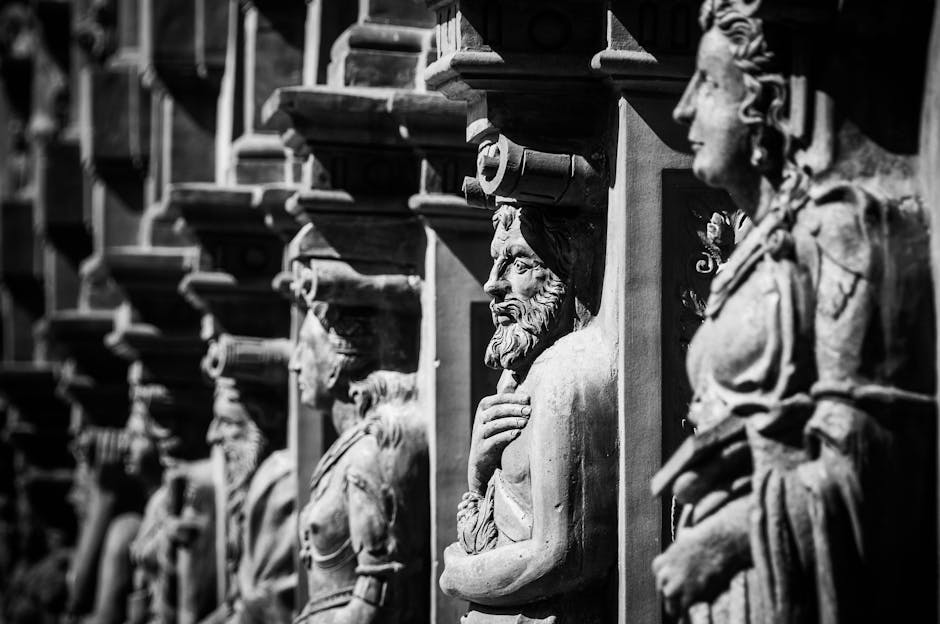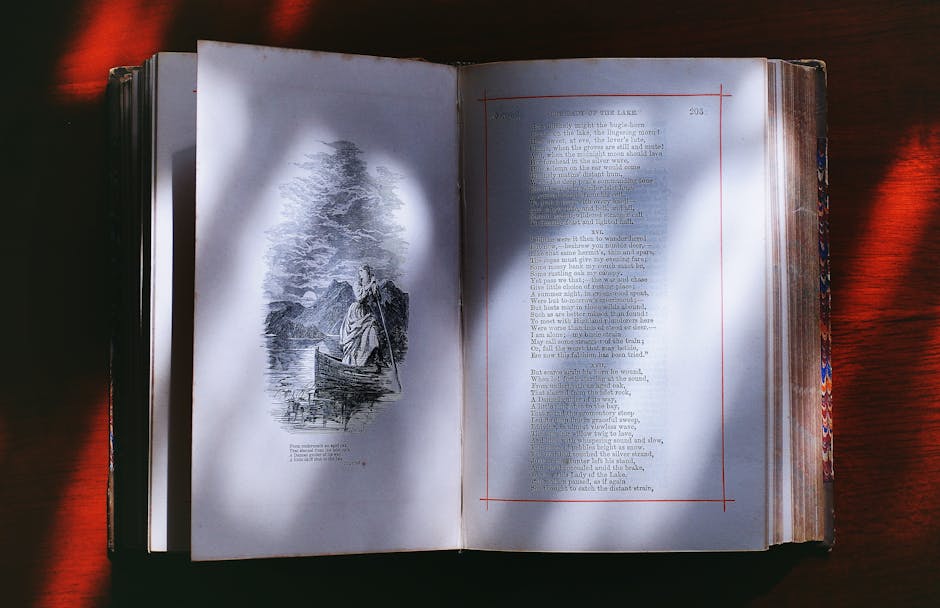I stand at the base of the Dachstein, my neck craned back, tracing the limestone face that rises 2,995 meters into the Austrian sky. My grandmother stood here once. Her grandmother too. And before them, countless others whose names I'll never know but whose blood runs through my veins. The mountain didn't care about any of us. It simply stood.
That's the thing about mountains. They don't remember us the way we remember them.
Yet here I am, trying to imagine what these peaks witnessed as my ancestors passed through the Salzkammergut. The mountain watched them all—the salt miners trudging to work before dawn, the merchants hauling goods along treacherous paths, the soldiers marching through during wars whose causes have been forgotten. Every footstep, every breath, every moment of fear or joy or exhaustion happened under the same indifferent gaze of these ancient stones.
The Weight of Geological Time
The mountains of the Salzkammergut are roughly 230 million years old. Let that number sit with you for a moment. 230 million years.
My family's documented history goes back maybe 400 years if I'm generous with parish records and genealogical guesswork. That's 0.0001739% of the mountain's age. We're not even a blink. We're less than a blink—we're the space between thoughts, the pause between heartbeats.
The Dachstein was already ancient when the first Homo sapiens walked into Europe roughly 45,000 years ago. It was old when the Romans built their roads through these valleys. It stood unchanged when Charlemagne's empire rose and fell. The mountain witnessed the entire span of human civilization in this region, and to the mountain, it all happened in an instant.
But here's what gets me: the mountain doesn't actually witness anything. It has no consciousness, no memory, no awareness. Yet we project onto it this role of eternal observer because we need something to be permanent. We need something to outlast us.

What the Salt Roads Knew
The Salzkammergut means "estate of the salt chamber," and that name tells you everything about why people came here. Salt. White gold. The mineral that preserved food, that paid Roman soldiers (hence "salary"), that built empires and bankrupted kingdoms.
My ancestors probably worked these mines. The historical records from Hallstatt show that salt mining began here around 1600 BCE—that's 3,600 years of continuous extraction from the same mountain. Think about that. The Bronze Age miners and the 19th-century workers were doing essentially the same job, separated by millennia but connected by the same dark tunnels and the same mountain pressing down above them.
The old salt roads wound through these mountains, paths worn smooth by thousands of years of foot traffic. Merchants walked these routes carrying blocks of salt worth more than gold. Bandits hid in the forests. Pilgrims passed through on their way to holy sites. Lovers met in secret. Children played. People died.
The mountains watched it all and remembered none of it.
The Human Scale of Deep Time
I found my great-great-grandfather's name in the mining records from 1887. Johann Huber. He worked underground for 43 years. That's 43 years of descending into darkness, of breathing salt dust, of feeling the mountain's weight overhead. He died at 67, his lungs probably scarred beyond recognition.
The mountain doesn't know his name. But I do. And that matters.
When I hike these trails now, I'm walking paths that Johann walked. The Dachstein looks exactly the same to me as it did to him. The same peaks, the same valleys, the same play of light across the rock faces at sunset. We're separated by 137 years, but the mountain erases that distance. It makes us contemporaries.
Wars Came and Went Like Weather
The mountains of the Salzkammergut have stood through every European war. The Thirty Years' War. The Napoleonic Wars. World War I. World War II. Each conflict brought soldiers through these passes, and the mountains didn't care which side they fought for.
During World War II, the Nazis used the salt mines at Altaussee to hide stolen art—thousands of paintings, sculptures, and cultural treasures looted from across Europe. They stored Vermeer's "The Art of Painting" and Michelangelo's "Madonna of Bruges" in the same tunnels where my ancestors had extracted salt. The mountain held both the mundane and the priceless with equal indifference.
There's a spot near Bad Ischl where you can still see carved initials from soldiers who passed through in 1916. "K.M. 1916" someone scratched into the rock. I don't know if K.M. survived the war. The mountain doesn't either.
But those initials remain. They'll probably outlast my own lifetime. They might last another hundred years before weather finally erases them. That's the strange mathematics of permanence—the mountain is eternal, but even its surface carries temporary marks that can outlive entire human generations.

The Mountains Don't Care About Our Stories
This is the hard truth: the mountains are indifferent to human history. They don't preserve our stories. They don't honor our struggles. They simply persist.
When I was younger, I found this depressing. What's the point of anything if the mountains—the most permanent things we know—don't even notice us? Why does it matter that my ancestors passed through here if the mountains have already forgotten them?
But I've come to see it differently now.
The mountains don't need to remember us. That's our job. We remember each other. We tell the stories. We carve the initials. We write down the names in mining records. We stand at the base of the Dachstein and think about everyone who stood here before us.
The mountain provides the stage, but we write the play. And maybe that's enough.
What Gets Passed Down
My grandmother told me about walking these mountain paths as a child in the 1930s. She'd hike up to the alpine meadows with her father to check on their small herd of cattle. She remembered the specific smell of the alpine flowers—gentian and edelweiss and mountain avens. She remembered how the clouds would suddenly roll in and hide the peaks, making you feel small and lost even on familiar trails.
Now I hike those same trails with my own children. The flowers smell the same. The clouds still roll in without warning. The mountains look exactly as they did in my grandmother's childhood, and exactly as they did centuries before that.
But the stories change. They get added to, embellished, forgotten, rediscovered. My grandmother's memories become my memories become my children's memories. We're all connected through these mountains, even though the mountains themselves don't connect us.
We do that work ourselves.
The Archaeology of Everyday Life
Archaeologists working in the Dachstein region have found artifacts spanning thousands of years. Bronze Age tools. Roman coins. Medieval pottery shards. Each object is a small window into someone's daily life—someone who walked under these same peaks, who looked up at the same stone faces, who probably wondered about their own place in the vast sweep of time.
A Bronze Age miner dropped a tool in the Hallstatt salt mines around 1500 BCE. We found it in 1838, preserved perfectly by the salt. That tool was used by someone whose name we'll never know, whose language we can't speak, whose thoughts we can't access. But we have their tool. We know they worked in darkness. We know they feared cave-ins. We know they went home tired.
The mountain held that tool for 3,300 years before releasing it back to us. That's the closest thing to memory that mountains possess—they hold things. Sometimes they give them back.
The Layers Beneath Our Feet
Every trail in the Salzkammergut is built on older trails. The hiking paths tourists walk today often follow routes that have been used for centuries, sometimes millennia. You're literally walking in the footsteps of countless others, though the mountains have long since absorbed any physical trace of them.
I think about this when I hike. My boots press into the same earth that supported my grandmother's shoes, my great-grandfather's work boots, some unnamed medieval traveler's leather sandals. We're all part of the same long procession, moving through the mountains that don't move at all.
The geologists tell us that the mountains are moving, of course. Continental plates shift. Erosion works its slow magic. In another few million years, the Dachstein will look different. But on the human timescale—on my timescale—they're permanent. They're the one constant in a world where everything else changes.
Why This Matters Now
We live in an age obsessed with impermanence. Everything is temporary, disposable, replaceable. We stream our music instead of owning albums. We rent instead of buying. We swipe through faces on dating apps. Nothing sticks.
But the mountains stick. They've always stuck.
When I stand at the base of the Dachstein, I'm connecting to something that transcends my individual life, my family's history, even human history. I'm connecting to deep time, to geological processes that operate on scales so vast they make human civilization look like a brief experiment.
And yet—and this is the paradox—that connection only exists because I make it. The mountain doesn't reach out to me. I reach out to the mountain. I project meaning onto its indifferent face. I tell myself stories about permanence and witness and memory.
But maybe that's okay. Maybe that's exactly what we're supposed to do.
The Comfort of Continuity
There's something deeply comforting about knowing that the mountains watched my ancestors pass through. Even if "watched" is the wrong word. Even if the mountains are unconscious stone that couldn't care less about human drama.
It comforts me to know that when Johann Huber felt the weight of the mountain above him in those salt tunnels, he was feeling the same weight I feel when I hike these trails. That when my grandmother looked up at the Dachstein's peak, she saw the same peak I see. That continuity matters, even if it's just continuity of human experience rather than any actual connection mediated by the mountains themselves.
We're all temporary. The mountains remind us of that. But they also remind us that we're part of a longer story, a procession that started long before us and will continue long after we're gone.
The mountains don't remember us. But we remember each other, and we remember the mountains, and maybe that's the only immortality we get.
Standing at the Base Again
I'm back where I started, neck craned, looking up at the Dachstein. The limestone face reveals nothing about the millennia it has witnessed. The mountain keeps its secrets—or rather, it has no secrets to keep because it never noticed us in the first place.
But I notice it. I notice how the light hits the rock differently at different times of day. I notice the way clouds catch on the peaks. I notice the paths worn smooth by generations of feet, including my own.
My ancestors passed through here. They worked these mountains, walked these trails, lived their lives in the shadow of these peaks. The mountains didn't watch them, not really. But I watch the mountains, and I think about my ancestors, and in that thinking, I make a connection that the mountains themselves could never make.
That's the work of being human. We create meaning in a universe that doesn't provide it. We tell stories about mountains that don't tell stories about us. We remember when nothing else does.
The mountains will be here long after I'm gone. They'll be here when my children are gone, and their children, and their children's children. They'll stand unchanged while human civilization rises and falls and perhaps rises again. They'll witness everything and remember nothing.
And that's exactly as it should be. Because memory isn't the mountain's job. It's ours.